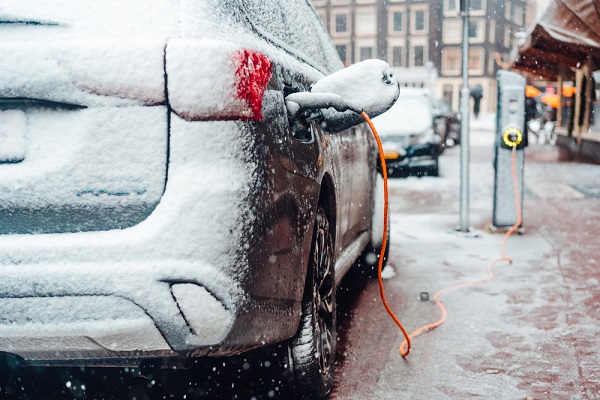Uncategorized
North Carolina gov pleads with storm evacuees to be patient

WILMINGTON, N.C. — With Wilmington still mostly an island surrounded by Hurricane Florence’s floodwaters and people waiting for hours for handouts of necessities like food, North Carolina’s governor is pleading with thousands of evacuees to be patient and not return home just yet.
“I know it was hard to leave home, and it is even harder to wait and wonder whether you even have a home to go back to,” Gov. Roy Cooper said as officials began distributing supplies to residents of Wilmington, population 120,000.
The death toll rose to at least 37 in three states Tuesday, with 27 fatalities in North Carolina, as Florence’s remnants went in two directions: Water flowed downstream toward the Carolina coast, and storms raced through the Northeast, where flash floods hit New Hampshire and New York state .
Cooper warned that the flooding set off by as much as 3 feet (1
“I know for many people this feels like a nightmare that just won’t end,” he said.
Addressing roughly 10,000 people who remain in shelters and “countless more” staying elsewhere, Cooper urged residents to stay put for now, particularly those from the hardest-hit coastal counties that include Wilmington, near where Florence blew ashore on Friday. A second shelter is opening in Carteret County.
Roads remain treacherous, he said, and some are still being closed for the first time as rivers swelled by torrential rains inland drain toward the Atlantic.
In South Carolina, two women died after a van was overtaken by rising flood waters near the Little Pee Dee River. Marion County Coroner Jerry Richardson told The Associated Press that the women, detainees being transported to a mental health facility, drowned at around 6 p.m. Tuesday when a van tried to cross a roadway and was overtaken by water. Their names have not been released. Two other people were sent to a hospital for observation.
The White House said President Donald Trump will visit North Carolina on Wednesday to see the damage. Beforehand he boasted on Twitter: “Right now, everybody is saying what a great job we are doing with Hurricane Florence — and they are 100% correct.” He warned that the Democrats will soon start criticizing the government response, and “this will be a total lie, but that’s what they do, and everybody knows it!”
In Wilmington, workers began handing out supplies using a system resembling a giant fast-food drive-thru: Drivers pulled up to a line of pallets, placed an order and left without having to get out. A woman blew a whistle each time drivers had to pull forward.
Todd Tremain needed tarps to cover up spots where Florence’s winds ripped shingles off his roof. Others got a case of bottled water or military MREs, or field rations. An olive-drab military forklift moved around huge pallets loaded with supplies.
Brandon Echavarrieta struggled to stay composed as he described life post-Florence: no power for days, rotted meat in the freezer, no water or food and just one bath in a week.
“It’s been pretty bad,” said Echavarrieta, 34, his voice breaking.
Nearby, about 200 people lined up to buy 40-pound (18-kilogram) bags of ice as quickly as a Rose Ice and Coal Co. could produce it.
Supplies have been brought into the city by big military trucks and helicopters, which also were used to pluck hundreds of desperate people from homes and other structures.
Mayor Bill Saffo said two routes were now open into Wilmington, which had been completely cut off by floodwaters, but those roads could close again as water swells the Cape Fear River on the city’s west side.
At Fayetteville, about 100 miles (160
The flooding got so bad that authorities closed a vehicle bridge in Fayetteville after the river began touching girders supporting the bridge’s top deck. Fayetteville Mayor Mitch Colvin said it was unclear if the bridge was threatened. “We’ve never had it at those levels before so we don’t really know what the impact will be just yet,” he said.
The river swallowed trees, lamp posts and a parking lot near its banks. City officials warned still-rising water threatened some
Human and animal waste is mixing with the swirling floodwaters, which have killed about 1.7 million chickens on poultry farms. More than 5 million gallons (18 million
The governor said 16 rivers statewide were at major flood stage and more than 1,100 roads were closed. Emergency workers reported rescuing and evacuating more than 2,200 people and around 575 animals, he said.
In a bright spot, the Lumber River appeared to be falling in hard-hit Lumberton, about 70 miles (110
___
Waggoner reported from Raleigh, North Carolina. AP photographer Gerry Broome in Lumberton, North Carolina; Gary Robertson in Raleigh; Alex Derosier in Fayetteville, North Carolina; and Jay Reeves in Atlanta contributed to this report.
___
Follow Martha Waggoner on Twitter at http://twitter.com/mjwaggonernc
___
For the latest on Hurricane Florence, visit https://www.apnews.com/tag/Hurricanes
___
This story has been corrected to show the death toll in North Carolina is 27, not 29.
Chuck Burton And Martha Waggoner, The Associated Press
Uncategorized
Cost of bureaucracy balloons 80 per cent in 10 years: Public Accounts

The cost of the bureaucracy increased by $6 billion last year, according to newly released numbers in Public Accounts disclosures. The Canadian Taxpayers Federation is calling on Prime Minister Mark Carney to immediately shrink the bureaucracy.
“The Public Accounts show the cost of the federal bureaucracy is out of control,” said Franco Terrazzano, CTF Federal Director. “Tinkering around the edges won’t cut it, Carney needs to take urgent action to shrink the bloated federal bureaucracy.”
The federal bureaucracy cost taxpayers $71.4 billion in 2024-25, according to the Public Accounts. The cost of the federal bureaucracy increased by $6 billion, or more than nine per cent, over the last year.
The federal bureaucracy cost taxpayers $39.6 billion in 2015-16, according to the Public Accounts. That means the cost of the federal bureaucracy increased 80 per cent over the last 10 years. The government added 99,000 extra bureaucrats between 2015-16 and 2024-25.
Half of Canadians say federal services have gotten worse since 2016, despite the massive increase in the federal bureaucracy, according to a Leger poll.
Not only has the size of the bureaucracy increased, the cost of consultants, contractors and outsourcing has increased as well. The government spent $23.1 billion on “professional and special services” last year, according to the Public Accounts. That’s an 11 per cent increase over the previous year. The government’s spending on professional and special services more than doubled since 2015-16.
“Taxpayers should not be paying way more for in-house government bureaucrats and way more for outside help,” Terrazzano said. “Mere promises to find minor savings in the federal bureaucracy won’t fix Canada’s finances.
“Taxpayers need Carney to take urgent action and significantly cut the number of bureaucrats now.”
Table: Cost of bureaucracy and professional and special services, Public Accounts
| Year | Bureaucracy | Professional and special services |
|
$71,369,677,000 |
$23,145,218,000 |
|
|
$65,326,643,000 |
$20,771,477,000 |
|
|
$56,467,851,000 |
$18,591,373,000 |
|
|
$60,676,243,000 |
$17,511,078,000 |
|
|
$52,984,272,000 |
$14,720,455,000 |
|
|
$46,349,166,000 |
$13,334,341,000 |
|
|
$46,131,628,000 |
$12,940,395,000 |
|
|
$45,262,821,000 |
$12,950,619,000 |
|
|
$38,909,594,000 |
$11,910,257,000 |
|
|
$39,616,656,000 |
$11,082,974,000 |
Uncategorized
Trump Admin Establishing Council To Make Buildings Beautiful Again


From the Daily Caller News Foundation
By Jason Hopkins
The Trump administration is creating a first-of-its-kind task force aimed at ushering in a new “Golden Age” of beautiful infrastructure across the U.S.
The Department of Transportation (DOT) will announce the establishment of the Beautifying Transportation Infrastructure Council (BTIC) on Thursday, the Daily Caller News Foundation exclusively learned. The BTIC seeks to advise Transportation Secretary Sean Duffy on design and policy ideas for key infrastructure projects, including highways, bridges and transit hubs.
“What happened to our country’s proud tradition of building great, big, beautiful things?” Duffy said in a statement shared with the DCNF. “It’s time the design for America’s latest infrastructure projects reflects our nation’s strength, pride, and promise.”
“We’re engaging the best and brightest minds in architectural design and engineering to make beautiful structures that move you and bring about a new Golden Age of Transportation,” Duffy continued.
Mini scoop – here is the DOT’s rollout of its Beautifying Transportation Infrastructure Council, which will be tasked with making our buildings beautiful again. pic.twitter.com/
9iV2xSxdJM — Jason Hopkins (@jasonhopkinsdc) October 23, 2025
The DOT is encouraging nominations of the country’s best architects, urban planners, artists and others to serve on the council, according to the department. While ensuring that efficiency and safety remain a top priority, the BTIC will provide guidance on projects that “enhance” public areas and develop aesthetic performance metrics.
The new council aligns with an executive order signed by President Donald Trump in August 2025 regarding infrastructure. The “Making Federal Architecture Beautiful Again” order calls for federal public buildings in the country to “respect regional architectural heritage” and aims to prevent federal construction projects from using modernist and brutalist architecture styles, instead returning to a classical style.
“The Founders, in line with great societies before them, attached great importance to Federal civic architecture,” Trump’s order stated. “They wanted America’s public buildings to inspire the American people and encourage civic virtue.”
“President George Washington and Secretary of State Thomas Jefferson consciously modeled the most important buildings in Washington, D.C., on the classical architecture of ancient Athens and Rome,” the order continued. “Because of their proven ability to meet these requirements, classical and traditional architecture are preferred modes of architectural design.”
The DOT invested millions in major infrastructure projects since Trump’s return to the White House. Duffy announced in August a $43 million transformation initiative of the New York Penn Station in New York City and in September unveiledmajor progress in the rehabilitation and modernization of Washington Union Station in Washington, D.C.
The BTIC will comprise up to 11 members who will serve two-year terms, with the chance to be reappointed, according to the DOT. The task force will meet biannually. The deadline for nominations will end Nov. 21.
-

 Alberta12 hours ago
Alberta12 hours agoThe Recall Trap: 21 Alberta MLA’s face recall petitions
-

 Digital ID2 days ago
Digital ID2 days agoCanada considers creating national ID system using digital passports for domestic use
-

 Alberta2 days ago
Alberta2 days agoHere’s why city hall should save ‘blanket rezoning’ in Calgary
-

 Fraser Institute2 days ago
Fraser Institute2 days agoClaims about ‘unmarked graves’ don’t withstand scrutiny
-

 Business2 days ago
Business2 days agoToo nice to fight, Canada’s vulnerability in the age of authoritarian coercion
-

 Energy2 days ago
Energy2 days agoMeet REEF — the massive new export engine Canadians have never heard of
-

 Business2 days ago
Business2 days agoUNDRIP now guides all B.C. laws. BC Courts set off an avalanche of investment risk
-

 Fly Straight - John Ivison1 day ago
Fly Straight - John Ivison1 day agoMPs who cross the floor are dishonourable members










